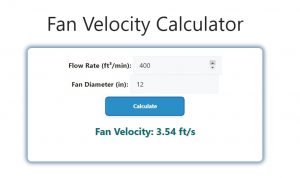About Lb/hr to Gpm Calculator (Formula)
In various industries, measuring the flow rate of liquids is crucial for ensuring efficiency and safety. One common conversion is from pounds per hour (lb/hr) to gallons per minute (GPM). This conversion is particularly important in fields such as food and beverage processing, chemical manufacturing, and pharmaceuticals. The lb/hr to GPM calculator simplifies this process, allowing for quick and accurate conversions that facilitate operations and regulatory compliance.
Formula
The formula to convert lb/hr to GPM is: GPM = LB/hr / D / 60, where D represents the density of the fluid in pounds per gallon.
How to Use
To use the lb/hr to GPM calculator, follow these simple steps:
- Identify the Density: Determine the density (D) of the liquid you are converting. This value is usually found in tables or material safety data sheets.
- Input lb/hr: Enter the flow rate in pounds per hour (lb/hr) into the calculator.
- Calculate: The calculator will apply the formula and provide the flow rate in gallons per minute (GPM).
Example
Suppose you have a liquid with a density of 8.34 lbs/gallon (typical for water) and a flow rate of 200 lb/hr. To find the flow rate in GPM:
- Identify D: 8.34 lbs/gallon
- Input lb/hr: 200 lb/hr
- Apply the formula: GPM = 200 / 8.34 / 60 = 0.399 GPM
So, the flow rate is approximately 0.399 GPM.

FAQs
- What is lb/hr?
- Lb/hr (pounds per hour) is a unit of measurement used to express the mass flow rate of a substance.
- What does GPM stand for?
- GPM stands for gallons per minute, a common unit of flow rate measurement for liquids.
- How do I find the density of a liquid?
- The density can typically be found in tables, material safety data sheets (MSDS), or through laboratory measurement.
- Can I use this calculator for any liquid?
- Yes, as long as you know the density of the liquid you are converting.
- Why is it important to convert lb/hr to GPM?
- Different industries use various units for flow rates, and conversions are necessary for compliance, efficiency, and safety.
- Is there a difference between lb/hr and GPM?
- Yes, lb/hr measures mass flow rate, while GPM measures volumetric flow rate.
- What if I don’t know the density of the liquid?
- You may need to look up the density of the specific liquid you are working with.
- Can this calculator be used for gases?
- This calculator is designed for liquids; gases typically require different considerations due to their compressibility.
- How accurate is the conversion?
- The conversion accuracy depends on the density value used; ensure to use precise density for best results.
- Are there any limitations to using the lb/hr to GPM calculator?
- Yes, the calculator assumes a constant density. Changes in temperature and pressure can affect liquid density.
- What industries commonly use lb/hr to GPM conversions?
- Industries such as food processing, chemical manufacturing, and water treatment often use these conversions.
- Can I convert GPM back to lb/hr?
- Yes, by rearranging the formula: LB/hr = GPM * D * 60.
- Is there a difference between U.S. gallons and imperial gallons?
- Yes, U.S. gallons and imperial gallons differ in volume; ensure to use the correct gallon type for conversions.
- Can I use the calculator for mixing liquids?
- Yes, as long as you know the density of the mixture, you can use the same conversion.
- How do temperature changes affect density?
- Density can change with temperature; liquids typically expand when heated, decreasing density.
- What other conversions are commonly needed in liquid measurement?
- Other common conversions include liters to gallons and cubic meters to gallons.
- Do I need to account for pressure in my calculations?
- For most liquids, pressure does not significantly affect density, but it may for gases.
- What tools can assist with density measurement?
- Tools such as hydrometers or density meters can provide accurate density readings.
- Is there a quick reference for typical densities of liquids?
- Yes, many engineering handbooks provide tables of typical densities for common liquids.
- Where can I find more information on flow rate conversions?
- Engineering textbooks, industry standards, and online resources provide extensive information on flow rate conversions.
Conclusion
The lb/hr to GPM calculator is an essential tool for professionals in various industries who need to convert flow rates quickly and accurately. Understanding the relationship between these two units allows for better monitoring and control of fluid processes. With the steps outlined above and the provided FAQs, users can confidently make conversions and ensure compliance with industry standards.